Antenna Design
Lab 13 - Small Antenna Impedance Matching
Simulation Guide
I. Simulation
Design
frequency: f 0 = (300 +
PIN/10000) MHz; 실습조교 PIN = 0000
Antenna
material: copper
Source: discrete port
1. Short Dipole and
Impedance Matching
Wavelength: 1 m
Dipole length L: 0.1 wavelength
Wire diameter d: 0.001
wavelength
Feed gap g: 0.001 wavelength
Wire material: copper (conductivity 5.7 × 107 S/m)
Simulation frequency range: 0.93 f0
- 1.07 f0 (280-320
MHz)
Impedance matching frequency: f0
(300 MHz)
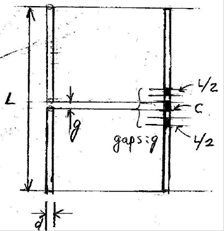
Figure: Left = a short dipole antenna, Right = Short dipole with matching
elements. Inductors L/2 are inserted
in the dipole wire while the capacitor C
is connected across the feed gap in parallel with the discrete port.
For the dipole antenna without matching elements,
1) Plot the antenna geometry.
(1) Make a project template.
New Template, Microwaves & RF /
Optical, Anennas
Create Project Template: Wire, Time
Domain
Units: default (mm, GHz)
Frequency Min. : 0.28 GHz
Frequency Max. : 0.32 GHz
Monitors: E-field,
H-field, Farfield
Defined at: 0.3 GHz
Template name: short dipole
(2) Make a dipole antenna structure.
A. Make one short the dipole wire
using parameter symbols.
Modeling, Cylinder icon, ESC key,
Name: solid1, Orientation: Z
Outer radius: d/2, Inner radius: 0
X center:0 Y center:0
Z min:
-L/2 Z max : L/2
Material : Copper (annealed)
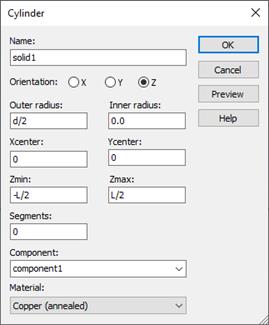
Wire diameter: 0.001 wavelength

Dipole length: 0.1 wavelength
 +
+
Material: copper
Load from Material Library
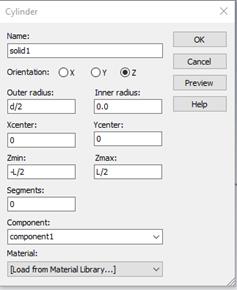
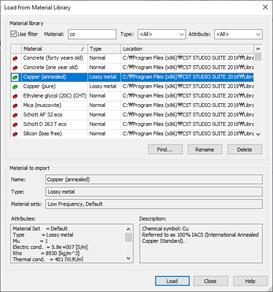
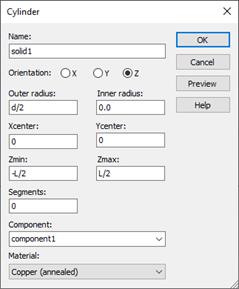
B. Make a
feed gap
Modeling, Cylinder icon, ESC key,
Name: solid2, Orientation: Z
Outer radius: d/2, Inner radius: 0
X center:0 Y center:0
Z min:
-g/2 Z max : g/2
Material : Vacuum

Feed gap: 0.001 wavelength

Ok
Shape intersection: Cut away
highlighted shape

(3) Add an antenna source. Set up a
discrete port.
A. Specify the surfaces between which
a discrete port is to be applied.
Modeling
Picks, Pick Points, Pick Face Center
Place the mouse point on the one of gap faces and then
double click.
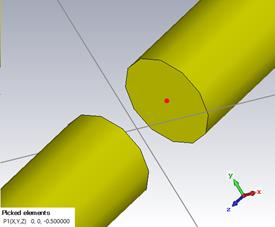
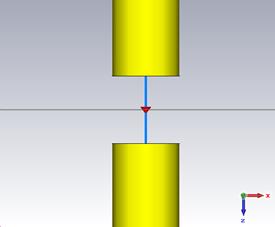
(4) Simulate
Simulation, Setup Solver, Start
(5) Plot the geometry
2) Plot S11 on the Smith chart.
1D Results, S-Parameters
RESULT TOOLS, 1D Plot, Z Smith Chart
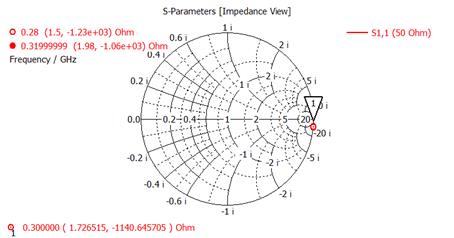
3) Plot |S11|(dB) Cartesian.
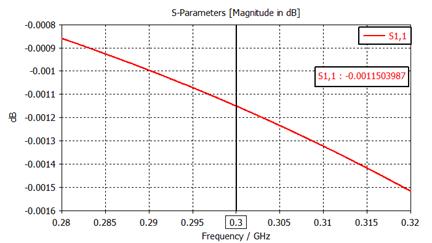
4) Plot the real and imaginary parts of Z11.
1D Results, Z Matrix, Real and Imaginary
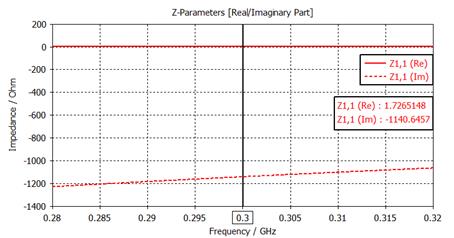
5) Find the antenna input impedance Z11 at f0.
Z11의 Real/Imaginary plot에서 우클릭, Axis Maker, Pos.: 0.3
Axis Marker 주파수 (0.3 GHz)에서 표시되는 값 기록
Z11 = (1.72) + j (-1140) W
For the dipole with matching elements,
6) Find the matching circuit element values (the first solution).
이론 부분의 ant-imped-match.exe 프로그램을 다운로드 후 실행
실행창 글꼴색, 바탕색 변경: 기본은 글꼴 백색, 바탕 흑색이라서 문서에 삽입하기 부적합
실행창 위 테두리에 커서 두고 우클릭
[속성], [색]
[화면 텍스트(T)] 선택 후 흑색 선택
[화면 배경(B)] 선택 후 백색 선택
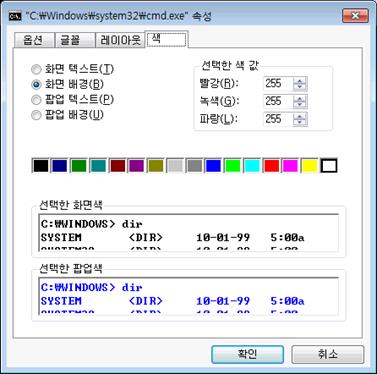
ant-imped-match.exe을 실행하여 1st SOLUTION의 matching element 값 기록
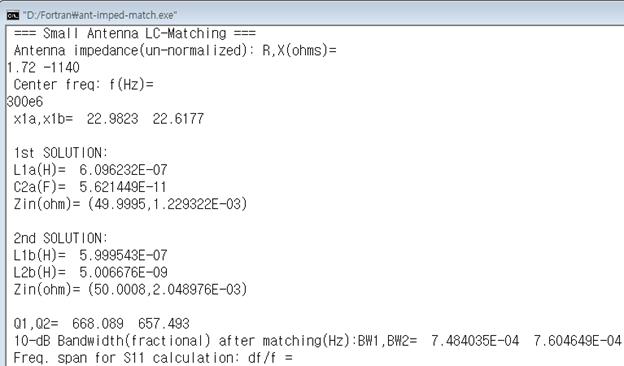
L = ( 0.609 ) uH
C = ( 56.2 ) pF
7) Add matching circuit elements and simulate the structure. Plot the
antenna geometry.
(1) 안테나 정합용 인덕터를 직렬로 연결하기 위한 gap을 다이폴에 생성


Ok
Shape intersection: Cut away
highlighted shape
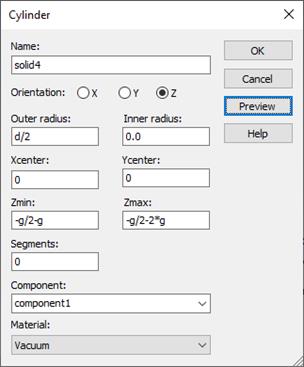

Ok
Shape intersection: Cut away
highlighted shape
(2) 임피던스 정합 소자 연결
Navigation Tee, click the Lumped Elements, the right
mouse button
New lumped element
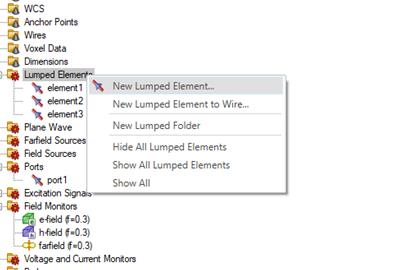
Element1 is C(Capacitor)
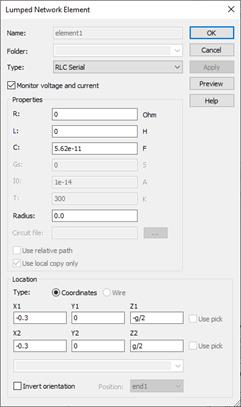
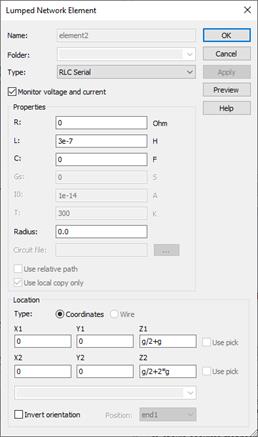
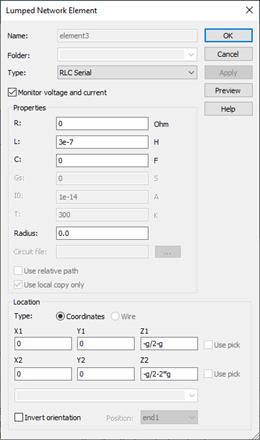
(3) Plot the antenna structure in a 3D form.
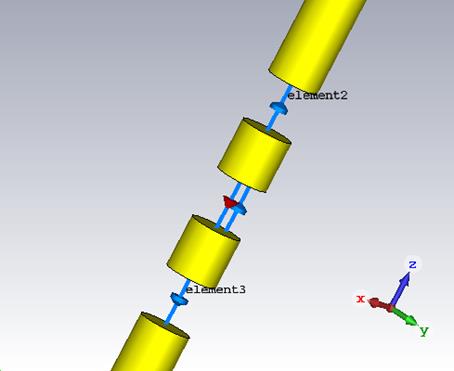
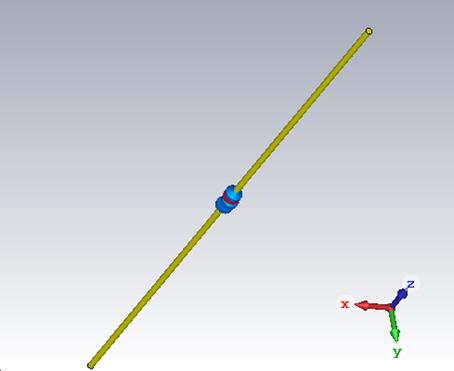
(4) Simulate
Simulation, Discrete Port

Simulation, Setup Solver, Start
8) Plot S11 on the Smith chart.
1D Results, S-Parameters
RESULT TOOLS, 1D Plot, Z Smith Chart
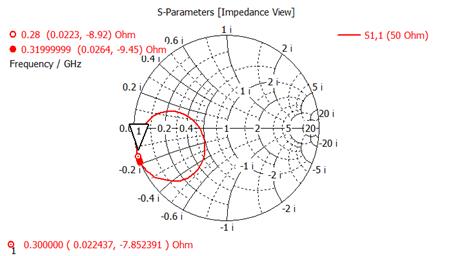
9) Plot |S11|(dB) Cartesian after matching.
1D Results, S-Parameters
RESULT TOOLS, 1D Plot, dB icon
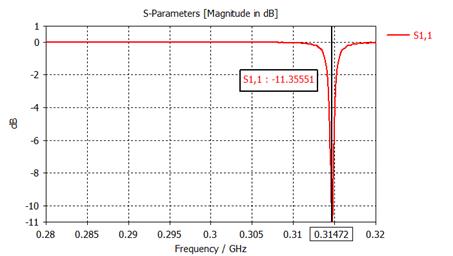
10) Find the 10-dB bandwidth
Plot |S11|(dB) at 0.31-0.32 GHz and
use Measure Lines.
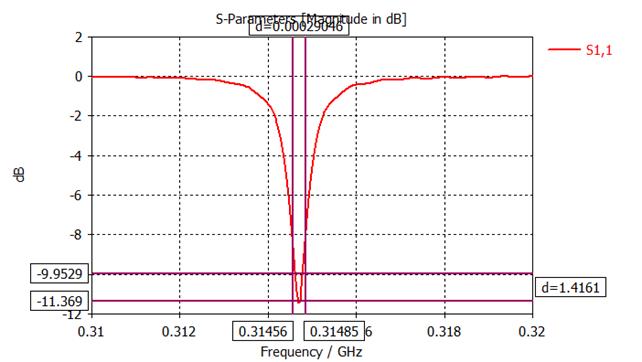
10-dB bandwidth = (
0.29 ) MHz
10-dB bandwidth = ( 0.096 ) %
2. Small Loop and Impedance Matching
Frequency: f0 (300 MHz)
Wavelength: 1 m
Loop diameter:
0.1 wavelength
Wire diameter:
0.001 wavelength
Feed gap: 0.001 wavelength
Wire
material: coppper
Simulation frequency range: 0.93 f0
- 1.07 f0 (280-320
MHz)
Impedance matching
frequency: f0 (300 MHz)
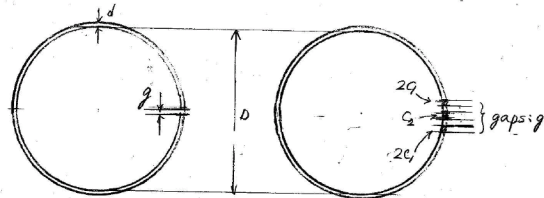
Figure: Small loop and impedance matching. Capacitors 2C1 are inserted in the loop
wire while the capacitor C2
is connected across the feed gap in parallel with the discrete port.
For the small loop antenna without matching elements
1) Plot the antenna geometry.
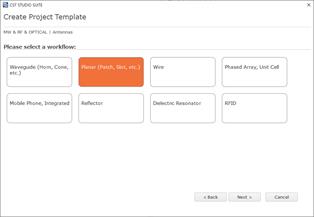
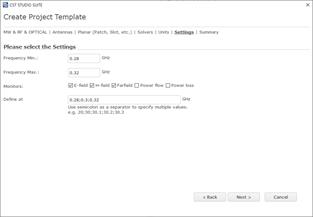
(방법: 구조 그리기)
1) 루프생성
Modeling, 고리 아이콘 선택, ESC 키, Name:
solid1, Orientation: Z
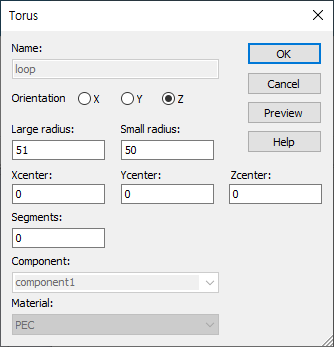
2) Feed gap 생성
Modeling, 직육면체 아이콘 선택, ESC 키, Name: solid2
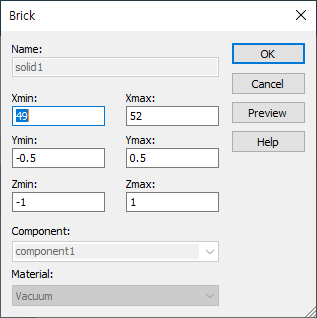
Shape Intersection-> Cut away
highlighted shape
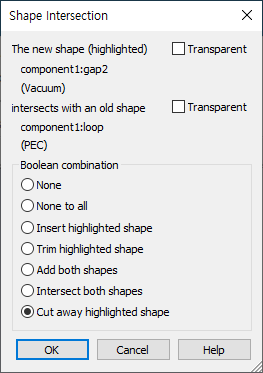
3) 포트설정
Modeling, Pick Points, Pick Face
Center, gap 한면에 마우스 위치후 더블클릭
Pick Points, Pick Face Center, gap 한면에 마우스 위치후 더블클릭
Simulation, Discrete Port
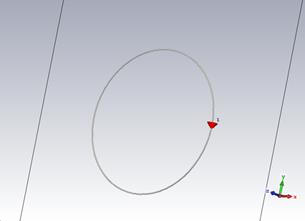
2) Plot S11 on the Smith chart.
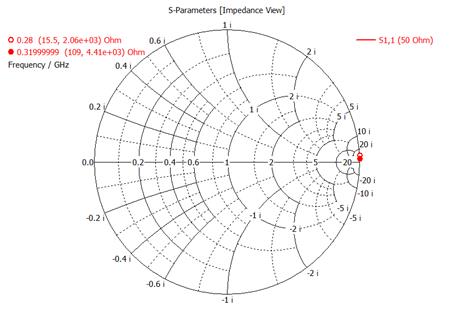
3) Plot |S11|(dB) Cartesian.
4) Plot the real and imaginary parts of Z11.
5) Find the antenna input impedance Z11 at f0.
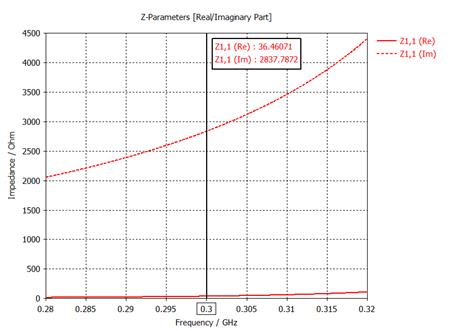
ZA = ( 36 ) + j ( 2837 ) ohms
For the small loop antenna with matching elements
6) Find the matching circuit element values (the first solution).
C1 = ( 0.188 ) pF
C2 = ( 6.62 ) pF
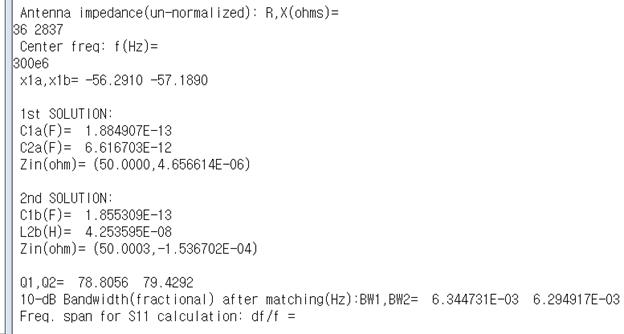
7) Add matching circuit elements and simulate the structure. Plot the
antenna geometry.
Modeling, Pick Points, Pick Face
Center, gap 한면에 마우스 위치후 더블클릭
Pick Points, Pick Face Center, gap 한면에 마우스 위치후 더블클릭
Simulation, Lumped Element
X1, X2 (-0.2)
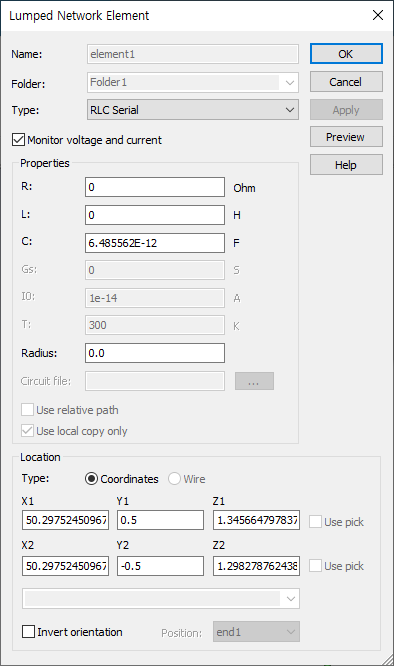
X1, X2 (+0.2)
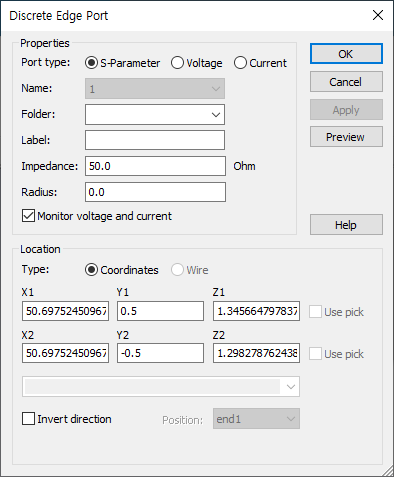
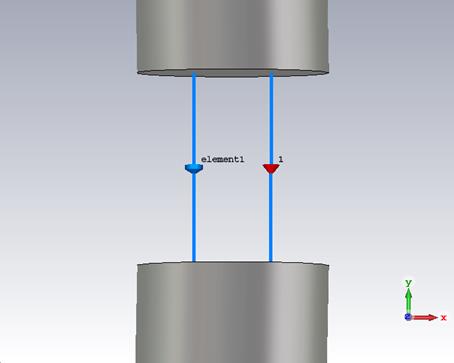
Modeling, 직육면체 아이콘 선택, ESC 키, Name: solid2
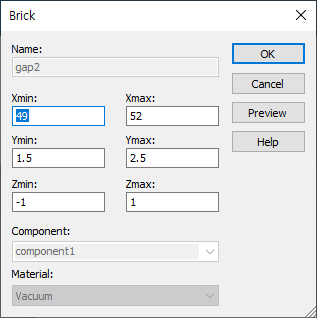
Shape Intersection-> Cut away
highlighted shape
Modeling, Pick Points, Pick Face
Center, gap 한면에 마우스 위치후 더블클릭
Pick Points, Pick Face Center, gap 한면에 마우스 위치후 더블클릭
Simulation, Lumped Element
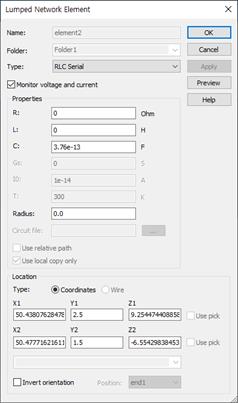
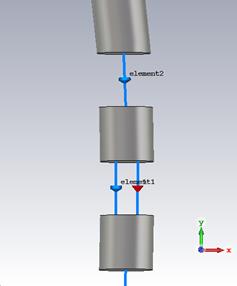
Modeling, 직육면체 아이콘 선택, ESC 키, Name: solid2
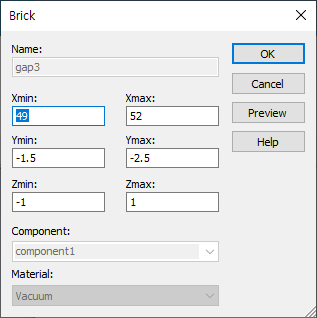
Shape Intersection-> Cut away
highlighted shape
Modeling, Pick Points, Pick Face
Center, gap 한면에 마우스 위치후 더블클릭
Pick Points, Pick Face Center, gap 한면에 마우스 위치후 더블클릭
Simulation, Lumped Element
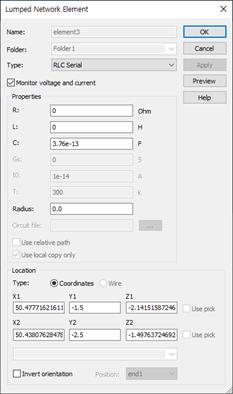
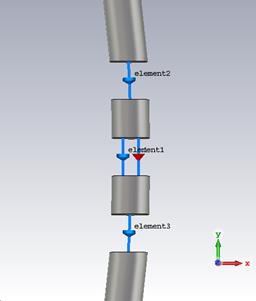
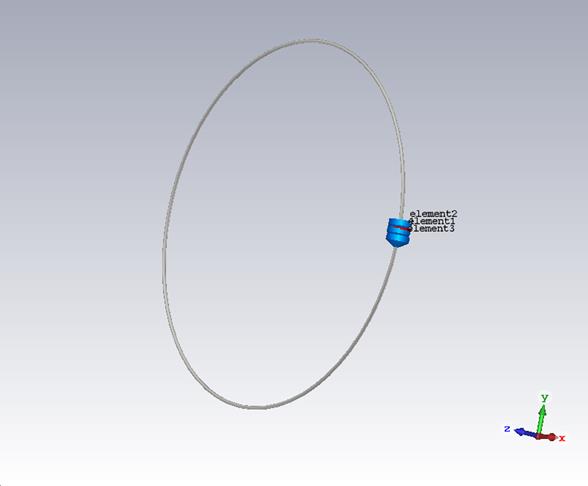
8) Plot S11 on the Smith chart.
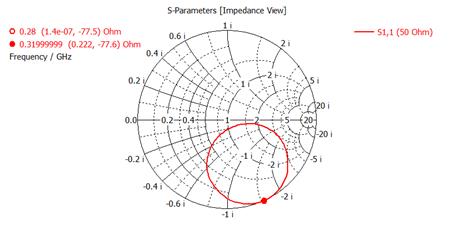
9) Plot |S11|(dB) Cartesian after matching.
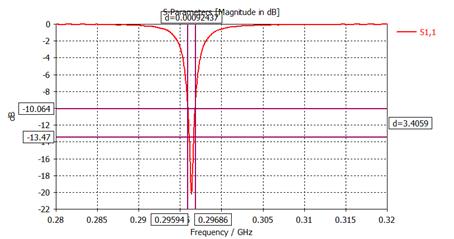
10) Find the 10-dB bandwidth
Plot |S11|(dB) at 0.29-0.30 GHz and
use Measure Lines.
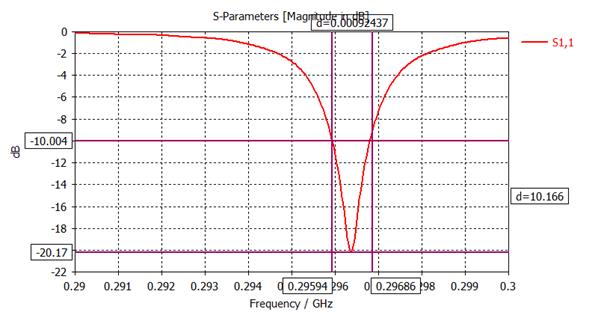
10-dB bandwidth = (
0.9 ) MHz
10-dB bandwidth = ( 0.3 ) %